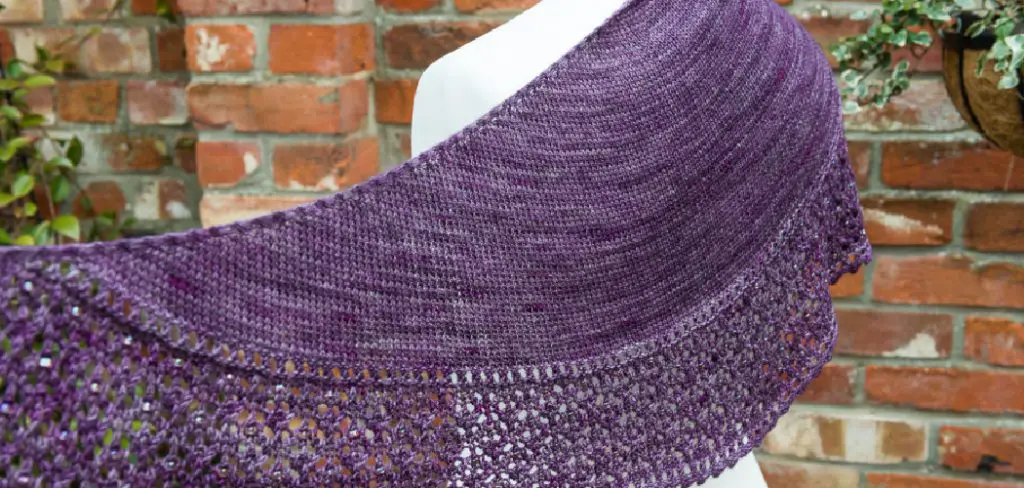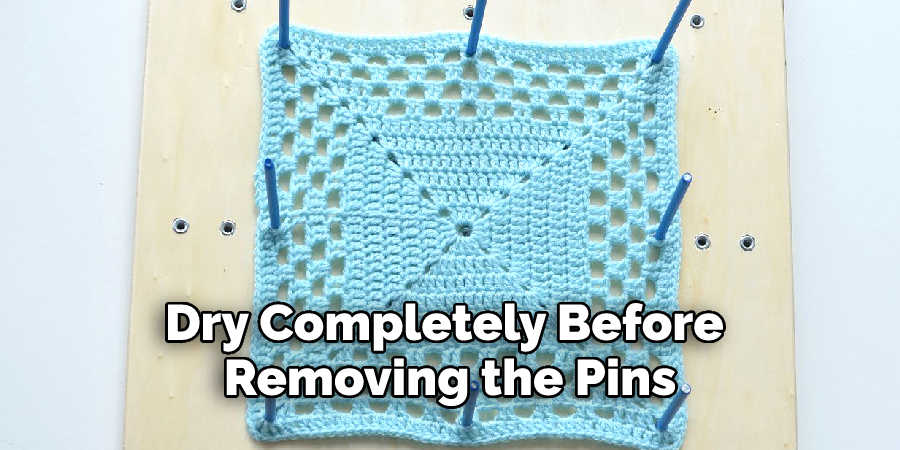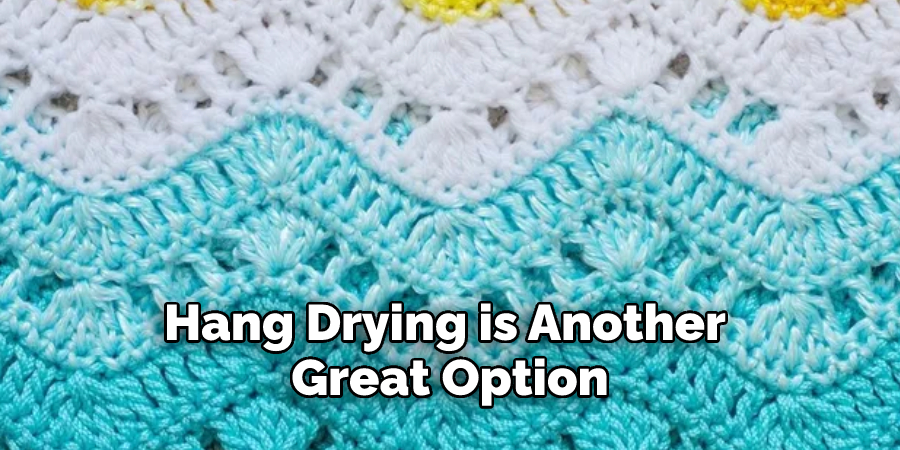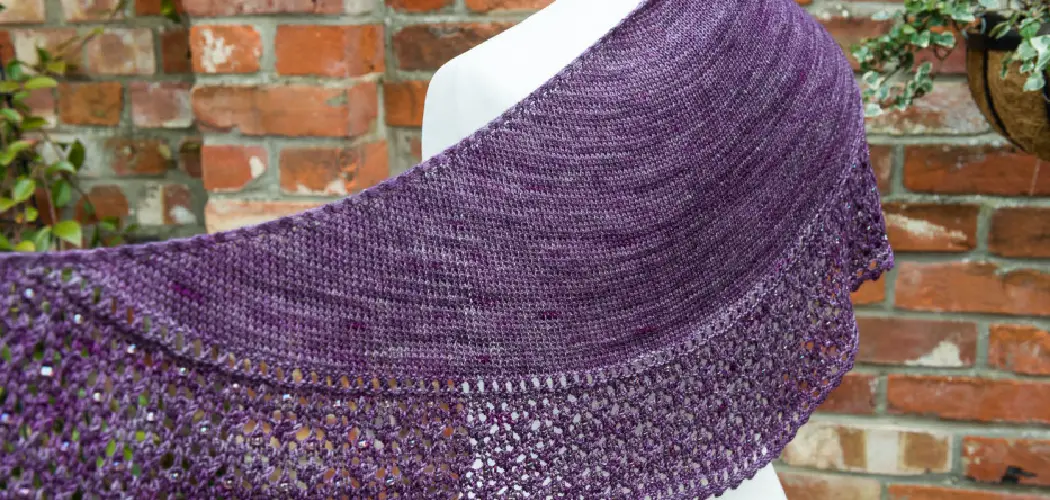Are you looking for a new challenge in your crochet journey? Block crocheting with cotton is an excellent choice. This type of craft uses heavier materials and cotton yarn to give each project more rigidity, making it great for bags, hats, shawls and more.

Plus, the steps are easy to learn—all you need are basic techniques and supplies. In this blog post, we’ll break down how to block crochet cotton step-by-step so that you can start creating beautiful projects with increased structure and stiffness!
Should I Block Cotton Crochet?
The answer is “it depends.” Blocking crocheted cotton can help to even out stitch irregularities, give the garment shape and texture definition, and make the overall project look more uniform. However, there are some instances where blocking may not be necessary or desired.
For instance, if you’re working with a fine gauge and delicate threads, blocking may not be ideal, as it can cause the fabric to become too stiff or damage the delicate yarn. If you’re working with projects that require durabilities such as a washcloth or kitchen towel, blocking may not be needed since they won’t require much shaping.
On the other hand, if you’re crafting a shawl, lace edging, doilies or other items that require more definition and structure, blocking is recommended as it will help with stitch definition and give the piece a finished look.
9 Methods How to Block Crochet Cotton
1. Use a Blocking Board
A blocking board is a flat surface that is covered in pins. You can use a blocking board to stretch your crochet piece to the desired shape and size. To use a blocking board, simply pin your crochet piece to the board and allow it to dry.
Although you can use other surfaces, such as a foam surface, a blocking board is the best way to block crochet cotton. However, if you do not have a blocking board, you can still block your crochet cotton.

2. Use a Foam Mat
A foam mat is another great option for blocking crochet pieces. Foam mats are typically used for yoga or exercise, but they can also be used for blocking crocheted pieces. To use a foam mat, simply pin your piece to the mat and allow it to dry. Once it is dry, the foam mat will help hold the shape of your piece and make it easier to remove your pins.
3. Use a Pillow
If you don’t have a blocking board or foam mat, you can also use a pillow to block your crochet piece. To do this, simply pin your piece to the pillow and allow it to dry. This method is the least recommended, as it may leave imprints from the pins on your project.
Additionally, if you use a synthetic pillow cushion or pillow insert, the heat from the iron will be absorbed by the pillow and may cause damage. Therefore, it is best to use an all-natural pillow or cushion for blocking purposes.
4. Use a Towel
Another option for blocking crochet pieces is to use a towel. To do this, simply spread out the towel on a flat surface and pin your piece to the towel. Allow it to dry completely before removing the pins.
This method is especially helpful for pieces that require a more delicate approach, such as lace items. Additionally, it can help to keep the tension even across the piece, giving it a neat and professional finish.
5. Use Cardboard
If you don’t have any of the other materials listed above, you can also use cardboard to block your crochet piece. To do this, simply cut two pieces of cardboard that are the same size as your crochet piece. Pin one piece of cardboard to the back of your piece and the other piece of cardboard to the front.
Allow it to dry completely before removing the pins. If your crochet piece is very large, you may need to use multiple pieces of cardboard. Make sure to put a piece of cardboard between each layer to prevent any stretching or distortion. Once your crochet is completely dry, and the cardboard has been removed, you can continue to work with it as normal.

6. Use Plastic Wrap
Another option for blocking crochet pieces is to use plastic wrap. To do this, simply place your crochet piece on a flat surface and cover it with plastic wrap. Allow it to dry completely before removing the plastic wrap. You may need to use pins to keep the plastic wrap in place.
As with any blocking method, it is important to make sure that your crochet piece is laid out to the correct size and shape before allowing it to dry.
7. Use Wax Paper
Wax paper is another great option for blocking crochet pieces. To use wax paper, simply place your crochet piece on a sheet of wax paper and allow it to dry completely before removing it from the wax paper. Wax paper will help to keep your crochet piece from stretching too much and won’t leave any marks behind like pins would.
The downside of using wax paper is that it can be tough to maneuver the fabric around in order to get the shape you want, and it does not work for blocking heavier or larger pieces. If you are going to use wax paper, be sure to use a heat gun or hairdryer on the lowest setting to slightly warm up the wax before placing your fabric onto it.
8 . Hang Drying
Hang drying is another great option for blocking crochet pieces. To dry your piece, simply find a place where you can hang your crocheted item without touching anything else. Allow it to dry completely before taking it down. You can use a fan to help speed up the drying process.

Make sure not to put it too close to the fan, or else it could distort your piece. Once it has dried, you can gently shape and press it into place. If any minor wrinkles have formed, you may need to steam them out with an iron on low heat. Be careful not to scorch or burn your piece. By hang drying, you can be sure that your crochet cotton will maintain its shape and texture.
9. Blocking Mats
Another method for blocking crochet pieces is to use blocking mats. Blocking mats are typically made of foam which you can pin your items onto in order to block them. You can then use a spray bottle of water or steam to shape your piece and allow it to dry completely before taking the pins out.
Blocking mats are great for blocking intricate lace pieces, as they provide lots of stability and support while allowing you to move the fabric around in order to get the desired shape. The downside is that they can be difficult to store and transport, so if you don’t plan on using them often, this may not be the best option for you.
Creating beautiful crochet pieces requires blocking at some stage during the process. By following these tips on how to block crochet cotton, you will have beautiful finished projects that look amazing every single time! Have fun creating!
Things to Consider When Blocking Crochet Cotton
1. Select the Right Type of Blocking Material
One of the most important factors when it comes to blocking crochet cotton is selecting an appropriate type of blocking material. Different types of fabric and thread will require different methods for blocking, so make sure you select a material that works best for your project.
2. Choose the Right Tools
You should always use tools specifically designed for blocking crochet cotton, such as pins or foam mats. Avoid using regular household items like clothespins or tape because they are not designed to accommodate delicate fabrics and threads used in crocheting projects.
3. Prepare the Cotton Correctly
Before beginning to block crochet cotton, you’ll need to prepare it correctly by making sure all loose ends are tied off and stitched down. This will help ensure that the shape of your project remains consistent throughout the blocking process.
4. Wet or Dry Block
When it comes to blocking crochet cotton, you have the option of wet or dry blocking, depending on what kind of results you are trying to achieve. Wet blocking is great for adding extra definition and shaping to the stitches, while dry blocking can help keep the fabric’s original shape intact.
You Can Check it Out to Crochet a Tunisian Blanket

5. Follow Blocking Instructions
Make sure you read through any blocking instructions that come with your yarn or thread closely in order to get the best results. If possible, test a small piece of scrap fabric first to make sure you are following the instructions correctly.
You Can Check It Out to Crochet Bell Sleeves
Conclusion
By following the steps on how to block crochet cotton, you’ll be able to block your crochet pieces with ease and achieve beautiful, professional results! With a little patience and practice, anyone can master the art of blocking. Give it a try today and see for yourself how simple and rewarding it can be.
You Can Check It Out to Use a Plastic Pom Pom Maker

